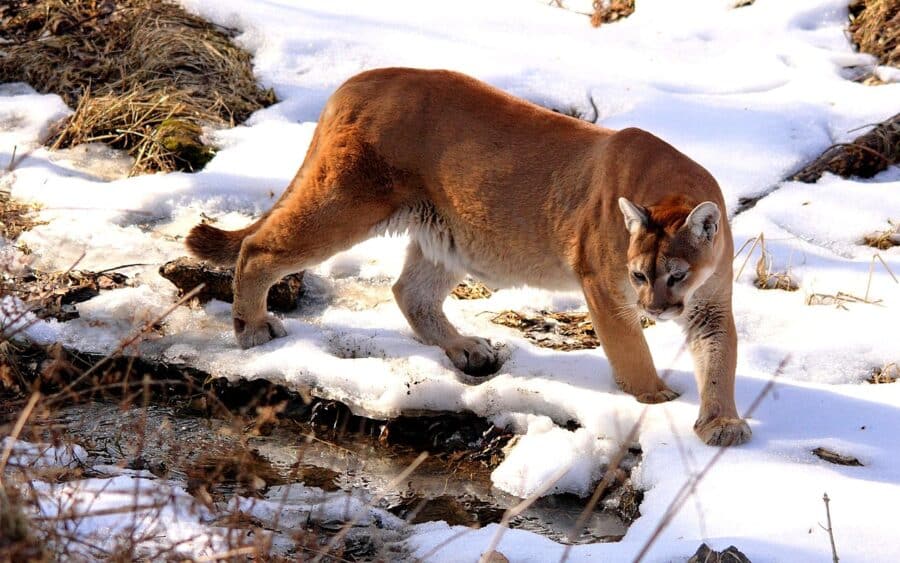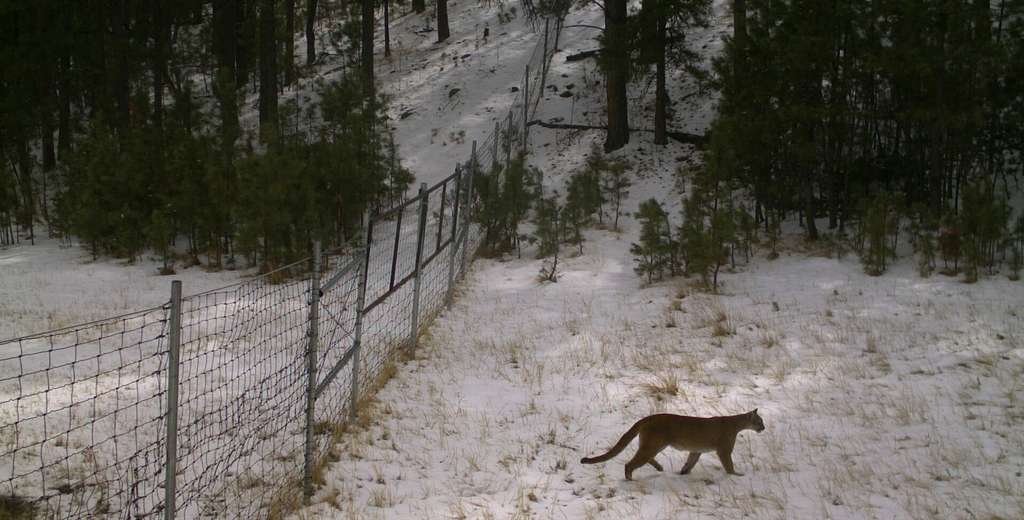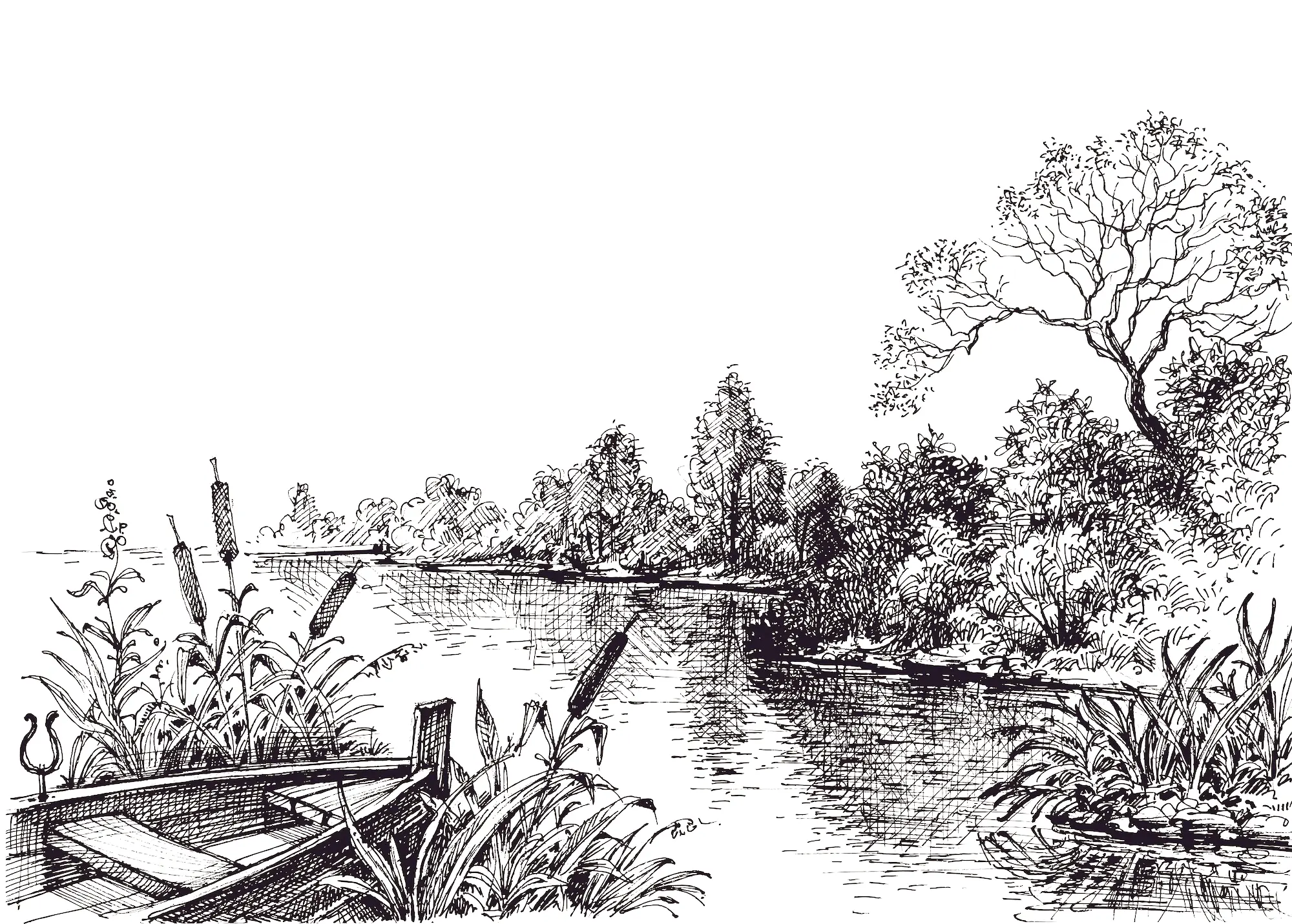John W. Laundré (1949-2021) was an ecology professor researching predators and the vice president of the Cougar Rewilding Foundation. In his 2009 book, Phantoms of the Prairie: The Return of Cougars to the Midwest, he explores the possibility of mountain lions returning to the Great Plains states, including Wisconsin. While so far the status of cougars in Wisconsin remains similar to when the book was published—a handful of scattered individuals, but no established breeding populations—there is still time for this to become “the century of the cougar in the Midwest,” as the book suggests. The following is an excerpt courtesy of the University of Wisconsin Press.
Will the Cougar Return to Wisconsin?
The big cat once roamed the Midwest, and may yet do so again


Long before the last cougar was killed in the prairie states, cougars ceased to exist as an ecological force. As with the loss of other top carnivores, the few remaining individuals could not perform the ecological functions previous populations had for eons. Devoid of cougars and wolves, the prairie ecosystem stopped functioning long before much of it was turned by the plow. Cows replaced bison on the grasslands, and deer became domestic livestock in the river breaks. Where the plow did not follow the cow, continued overgrazing and “range management” altered the structure and composition of the grasslands. The destruction of the prairie ecosystem rivals that happening in the Amazon basin in size and ecological impacts.
While waves of native grasses no longer break onto tree- and shrub-lined riverbanks, corn and wheat fields still do. The Great Plains, be it covered with grass or wheat and corn, still has to drain the torrents of rain that fall on it. The Missouri, the Platte, and the Arkansas Rivers still snake their way across the heart of the plains. Fingering off these large rivers are the myriad of tributaries extending into the far reaches of the landscape. The waterways still exist; they survived because of physics and gravity. And along with them, so did the riparian habitat. Though abused, and in many places turned into towns and fields or channelized, much of the riparian areas of the original prairies persist. Plagued by flooding or just too wet and rough, these areas were never plowed. They are battered and abused by cows and deer, but the original structures can still be found in many areas. Some are protected in county and state parks. Because we like shade and water, most parks in the Great Plains are located along streams and rivers. Much of the riparian habitat is on private land, left to grow wild when many midwestern farmers switched to growing only grains. Or, as in the drier reaches of the prairies where cows still dominate, they are left to provide shade for wandering livestock. Many streams and rivers still have extensive bands of forests protecting their shores.

The wolf and the bison, dependent on upland prairie grasses that are long gone, may never come back to the plains, but can the cougar? There definitely would seem to be sufficient deer to support cougars, but is there enough habitat for them to live and hunt in? These are not just questions that we are trying to answer, but it seems that cougars are also attempting to seek a response.
Within the first decade of the 21st century, each prairie state has reported confirmed sightings of cougars. It may be that this is the century of the cougar in the Midwest. More and more cougars appear to be trying to come back to their ancestral prairie haunts. Most of them are young animals, mainly males, dispersing from established western populations. Can they survive in this modern version of the plains? Or are they destined to fail, their valiant attempts ending up on the evening news as they too often die in a hail of bullets when they collide with human civilization?
Although dispersing cougars will eventually answer these questions themselves, here we will use science and maps to predict the biological likelihood of where cougars might be able to return to the prairie states. By return, I mean more than just by dispersing young males, but by dispersing females who could then establish breeding populations in an area. Because of the nature of cougars it can be relatively easy to have male cougars disperse hundreds of kilometers into the prairie region and beyond. However, until we get a few reluctant females to make these journeys, cougars will not establish themselves in these distant areas. When I talk about the possibility of cougars establishing populations in any given area, I refer to the number of females that an area could support. Because they are river cats, this analysis will be based on determining how much of the riparian habitat to support these females and their young still exists in each of the prairie states.
The Prospects in Wisconsin
Wisconsin is another prairie border state with relatively large patches of prairie lands extending only into the southern and southwestern sides of the state. Prairie habitat could be found as far northeast as Lake Winnebago and south to the shore of Lake Michigan, as well as north along the western border to River Falls. In these areas the habitat occurred in numerous patches, mixed in with oak savanna. In all, prairie and oak savanna habitat only comprised about 27% of the state’s original vegetation. Though the prairie habitat was not very extensive in Wisconsin, it probably represented a highly productive area for cougars. The mix of open prairie and oak savanna provided ideal hunting habitat for cougars in comparison to the more closed forest areas to the north. Thus we predict that cougar numbers were probably higher in the southern part of the state in pre-settlement times.
Today in the southern portion of the original prairie-savanna habitat, most of the land is devoted to corn and soybeans. The rest is pasture land or hay crops with scattered oak woodlots. The original habitat farther north along the western border in some places is mostly a mixture of row corps and pasture. In the region north of La Crosse, much of the original prairie–oak savanna has converted to deciduous forest, probably as a result of fire suppression.
Because most of the former prairie habitat in the southern part of Wisconsin is now intensively farmed, the potential of cougars returning to this part of the state as a viable population is low. Conversely, along the western edge of the state north of La Crosse, the forest cover has probably increased over historic times. Because there is still a mixture of forest and open land, there is a good chance that cougars could establish viable populations in this area. Additionally, most of the northern half of the state is still covered with extensive forest habitat. In the central forest region of the state east of Eau Claire, gray wolves have returned on their own. Thus the habitat appears adequate to support wolves and I predict that cougars could also survive well in this vast northern region. Over the last few years, several cougars have dispersed into this area from the west and most of them still remain unaccounted for. There is also evidence that one of them, a male dubbed the Champlin-Milford cougar, appears to have made it all the way to western Connecticut where it was killed on a busy highway near Milford. More recently, others have shown up on trail cameras set up by outdoorsmen. One of them even had a radio collar on. So far all appear to be males but if a female or two make the journey successfully, it is possible that cougars could also return to Wisconsin on their own. Any population that becomes established will most likely do so in these northern regions. Once established, dispersing animals from these regions will attempt to move to the south and west into these former prairie areas.
In summary, Wisconsin will likely have a resident cougar population in the northern part of the state. Animals from this population could probably persist in the former prairie areas along the Mississippi River north of La Crosse and south of Eau Claire. This region of former prairie and savanna is approximately 7,000 square kilometers and so could support biologically around 70 to 120 cougars. This part of the state is not too heavily populated by humans, and so it is possible that cougars might be tolerated sociologically. Individual animals will also try to move to the south but, because of the intensive agriculture in that region, will probably not be accepted.

John W. Laundré, originally from Wisconsin, studied cougars for more than 20 years in both the United States and Mexico. As vice president of the Cougar Rewilding Foundation, he advocated the return of cougars to their former territorial range.
Have thoughts or reactions to this or any other piece that you’d like to share? Send us a note with the Letter to the Editor form.
Want to republish this story? Check out our guide.
More from Barn Raiser

How a South Carolina Town Transformed into a Southeastern Arts Hub







